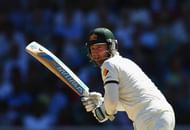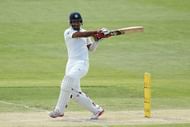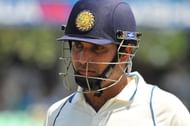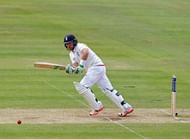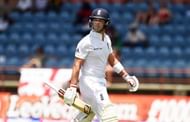It has often been said that T20 cricket is ruining the techniques of cricketers. The shortest format of the game, since its introduction, has been thought to endanger the popularity of Test and one-day cricket and also the ability of players to play long innings and bowl a consistent line and length.
Critics of T20 cricket claim that Test cricket is the toughest format of the game and that success in the longest format holds you in good stead for the other formats of the game. While there have been many players who have been adept at T20 cricket but have found themselves out of their depth in Test cricket, the converse has also been true.
Here are 6 players who have been great Test cricketers but struggled in T20s:
1. James Anderson
If one is asked to name some great England bowlers, the name of James Anderson would undoubtedly feature. The England international took his 400th Test wicket in their ongoing Test against New Zealand, becoming the first Englishman to do so, and looks set to break further milestones.
His averages of 29 in both Tests and One-Day Internationals (ODIs) prove his capability as a bowler. The norm is that when one is a good bowler in Tests and ODIs, he is automatically a good bowler in T20s. But in Jimmy’s case, it doesn’t hold true. With an average of 30 and an expensive economy rate of 7.86, Anderson has clearly not been able to replicate his success in T20 cricket. In fact, Anderson was made to sit out of the entire World T20 campaign in 2010, which England won, despite being in the squad, with left-armer Ryan Sidebottom instead preferred.
2. Michael Clarke
Michael Clarke is one of the finest Test batsmen in the world today. Keeping the Australian trend going, he took over from Ricky Ponting as the captain on the back of establishing himself as the best batsman in the side.
With a technique such as his and the fact that he is also a great one-day player, one would expect him to be a superb batsman in the T20 format of the game. However, a look at his stats should reveal the whole story – and it is not such a beautiful one.
While he has an average of 50.79 in Tests, his average in the shortest format of the game is a paltry 21.21 and his strike-rate is just over a hundred. He is the perfect example of how world-class Test players don’t have to be necessarily great in T20s.
3. Cheteshwar Pujara
After the retirements of Rahul Dravid, Sachin Tendulkar and VVS Laxman, the entire middle-order of the Indian team in Tests had a new look and Cheteshwar Pujara has been the face of it. His sheer class and ability to play long innings at tough times have made him the heir apparent to Dravid’s throne.
And just like his predecessor, he isn’t as efficient when it comes to T20s.
When donning the white shirt, his almost flawless technique allows him to bat for long periods where he doesn’t have to worry about scoring runs at a brisk pace. In his career so far, he has shown that batting at a quick pace is not his cup of tea.
A strike rate of just 102 in T20s – coupled with an average of 22.61 – reveals his inability to accelerate when required, which is almost always necessary in T20 cricket. And that’s why he could not find a team for himself in this year’s IPL.
4. VVS Laxman
The true epitome of a how a Test batsman should be! Laxman was unique, he was in a class of his own. There are a very few Test batsmen who could save or win Tests like Laxman could. That epic 281 against Australia remains one of the greatest innings ever played in a Test match. After all, he almost single-handedly won that Test for India.
His stature in Indian cricket is so huge that Deccan Charges, when the IPL first started, wanted him to be the icon player of their team, but being the gentleman that he is, he declined the offer so that the team could spend more money on other players without breaking the salary cap.
Ultimately, it turned out to be the right decision as he wasn’t going to have the same sort of impact in T20 cricket. His strike-rate was a miserly 114.71 and an average of 22.31 reflected his inability to replicate his class in the shortest format of the game.
Now a mentor with Sunrisers Hyderabad, he can pass on his experience of handling pressure situations, albeit in Test cricket, to the younger players.
5. Ian Bell
There aren’t many players in the England team who can call themselves world-class Test batsmen. Ian Bell, however, is one of them. Among one of the most talented batsmen in the world when in full flow, he oozes class while playing Test cricket.
In T20 cricket, however, it is evident that he is clearly out of his comfort zone.
The stylish batsman averages just around 26 in T20Is with a strike-rate of 115.33. When you compare this with his Test figures, the difference is contrasting and revealing. While he has an average of 44.22 in Tests and an average of 37.87 in ODIs, he has had nowhere near that success in T20s and isn’t a regular feature of the England side.
6. Jonathan Trott
What is a man with an average of 36.58 in all T20s doing in this list, you might think. And one would be right to ask that question. However, when one sees the rate at which he scores those runs, the inclusion would seem justified.
With a strike-rate of just 114, the average becomes more of a liability. If someone on an average scores 36 runs after playing 31 balls in a T20 game, it does more harm than good to the team. And this is exactly why he makes it to this list despite having a tremendous average.
His average in Tests and ODIs is even more astounding at 44.08 and 51.25 respectively, which just goes to show the abundant class he possessed.
While Trott’s batting was never the most pleasing to watch, it is a pity that a player of his class has had to retire from international cricket at the age of just 34.
Follow IPL Auction 2025 Live Updates, News & Biddings at Sportskeeda. Get the fastest updates on Mega-Auction and cricket news

